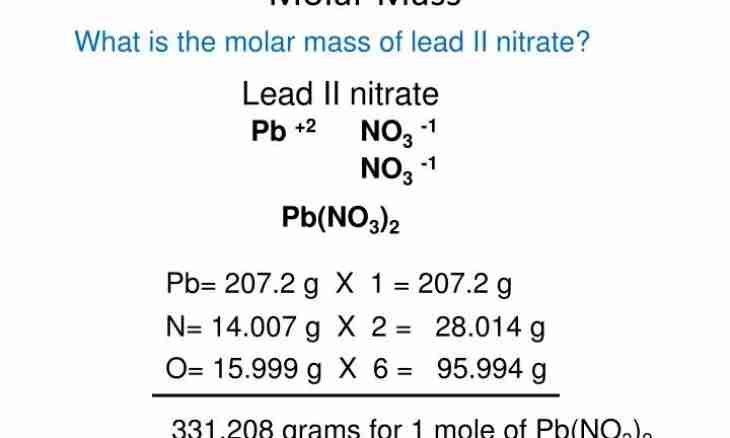Hydrogen – the first element of the table of Mendeleyev and the most widespread in the Universe as stars, mainly, consist of it. It is a part of substance, vital for biological life, – water. Hydrogen, as well as any other chemical element, has specific characteristics, including molar weight.
Instruction
1. Remember what is molar weight? It is weight of one mole of a substance, that is its such quantity in which is approximately 6.022*10^23 elementary particles of substance (atoms, molecules, ions). This enormous number carries naming "Avogadro's number", and is called so in honor of the famous scientist Amedeo Avogadro. The molar mass of substance coincides with its molecular weight in number, but has other dimension: not atomic units of mass (and. e. m), and gram/mol. Knowing it, to determine the molar mass of hydrogen as easy as shelling pears.
2. What structure does the hydrogen molecule have? It is diatomic, with formula H2. At once we will specify: the molecule consisting of two atoms of the lightest and widespread hydrogen isotope, protium, but not of heavier deuterium or tritium is considered. What atomic mass of one atom of hydrogen-protium? It is equal 1.008 and. e. m. For simplicity of calculations round it to 1. Therefore, the mass of a molecule of hydrogen will be equal 2 and. e. m. That is the molar mass of hydrogen will be equal 2 grams/mol.
3. And whether it is possible to calculate the molar mass of hydrogen in some other way? Yes, you may. For this purpose you should remember the universal equation of Mendeleyev-Klapeyrona which is very often used in physics and chemistry. It is called in honor of two outstanding scientists, and describes a condition of ideal gas under the conditions close to normal. This equation so looks: PV = MRT/m. Where, P is gas pressure in pascals, V – its volume in cubic meters, M – the actual mass of gas, m – the molar mass of gas, R – a universal gas constant, T – gas temperature in degrees Kelvin.
4. You see that the molar mass of gas m is easily calculated: m = MRT/PV. Having substituted all sizes known to you in this formula, you easily calculate the molar mass of hydrogen.

